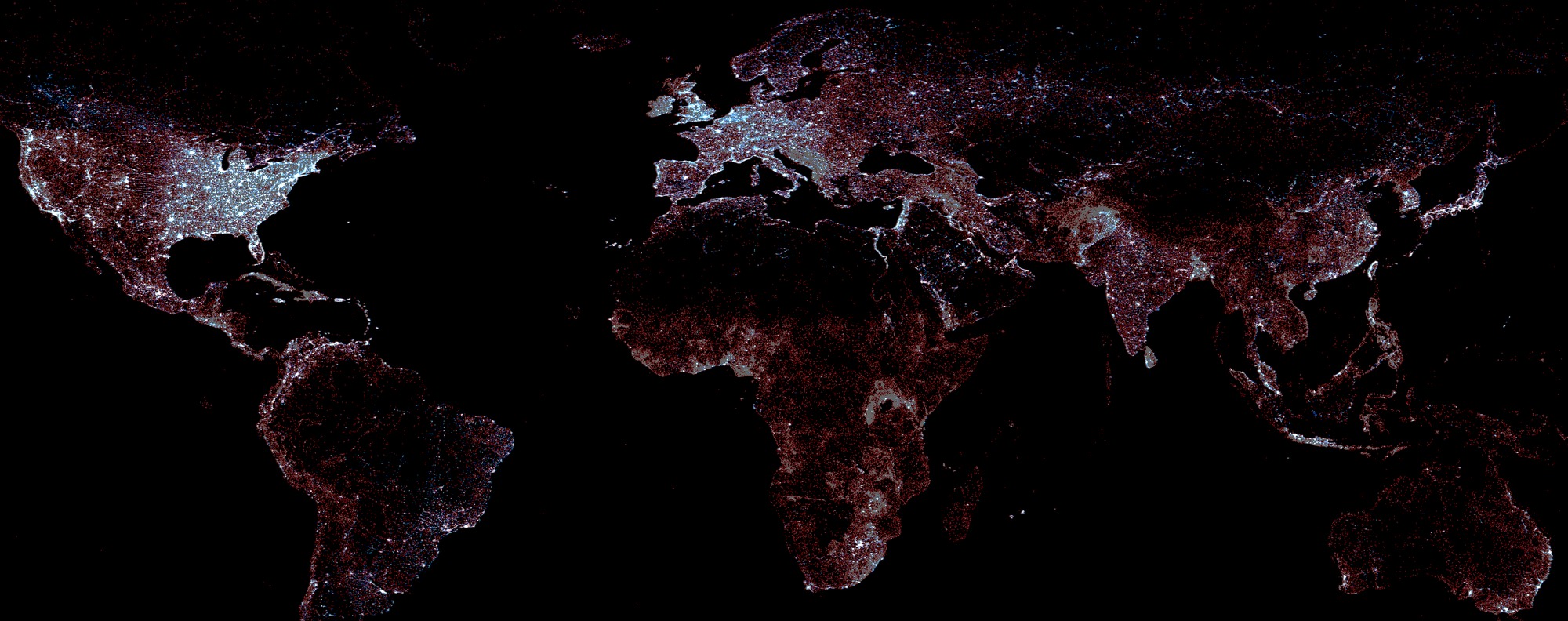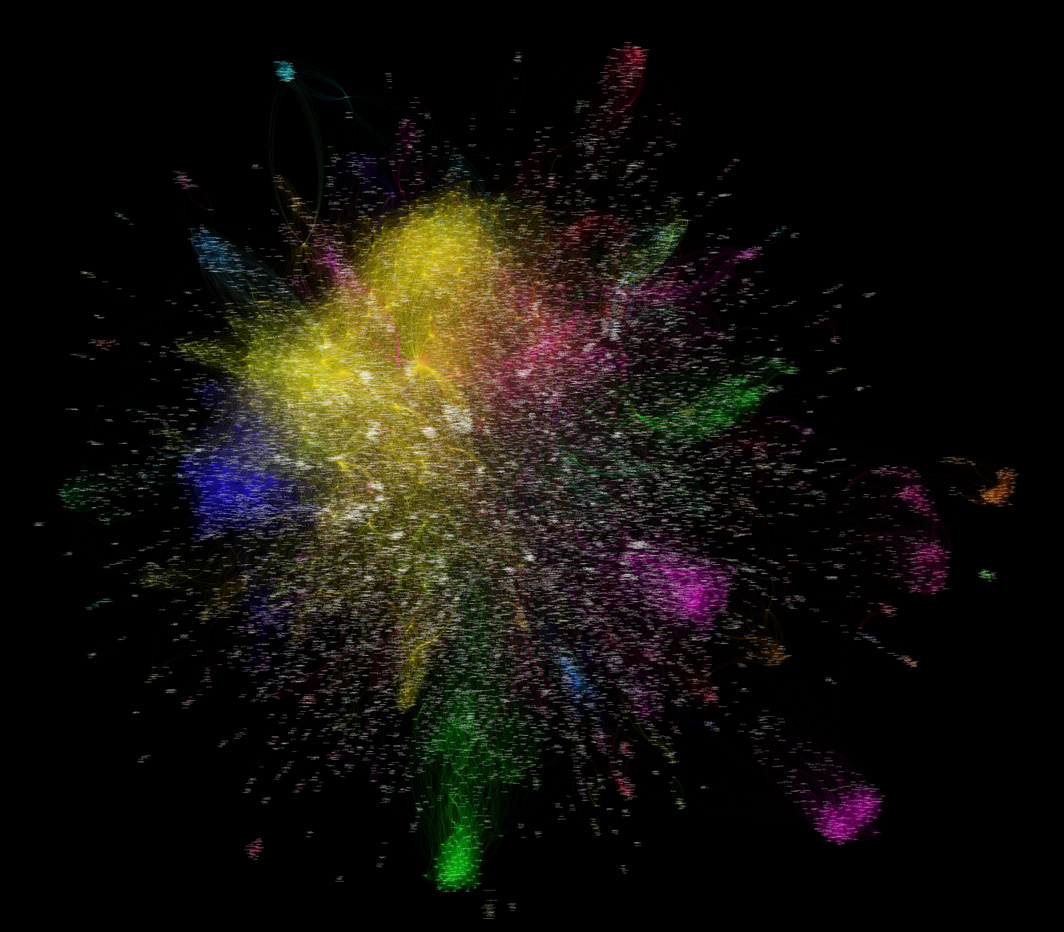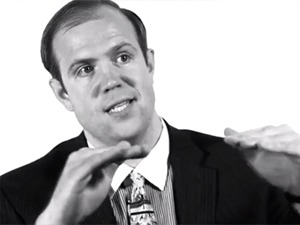Visualization credit GDELT Project.
The GDELT Story
Learn about how GDELT came to be, who made it, and how you can use it.
GDELT is the largest, most comprehensive, and highest resolution open database of human society ever created. Creating a platform that monitors the world's news media from nearly every corner of every country in print, broadcast, and web formats, in over 100 languages, every moment of every day and that stretches back to January 1, 1979 through present day, with daily updates, required an unprecedented array of technical and methodological innovations, partnerships, and whole new mindsets to bring this all together and make it a reality. Creating a database of a quarter billion georeferenced records covering the entire world over 30 years, coupled with the massive networks that connect all of the people, organizations, locations, themes, and emotions underlying those events, required not only solving unparalleled challenges to create the database, but also a "reimagining" of how we interact and think about societal-scale data.
How did GDELT come to be, what is its backstory, and who is its creator?
We'd love to hear from you - what's the best way to get in touch with us?
What can I do with GDELT and how can I use it in my projects?
Image credit Georgetown University.
The Creation of GDELT
How did GDELT come to be, what is its backstory, and who is its creator?
Genesis
For more than 25 years, GDELT's creator Kalev H. Leetaru has been studying the web and building systems to interact with and understand the way it is reshaping our global society, almost from the day Mosaic debuted. During his time at the National Center for Supercomputing Applications, the home of the modern web, he co-created one of the earliest "web-scale" web-mining platforms, monitoring the world's open information streams, including the earliest incarnations of "social media," to understand evolving global trends. One of Foreign Policy Magazine's Top 100 Global Thinkers of 2013, his work has been featured in the presses of over 100 nations and fundamentally changed how we think about information at scale and how the "big data" revolution is changing our ability to understand our global collective consciousness.

GDELT Is Born
The GDELT Project came from a desire to better understand global human society and especially the connection between communicative discourse and physical societal-scale behavior. The vision of the GDELT Project is to codify the entire planet into a computable format using all available open information sources that provides a new platform for understanding the global world.
What it is Today
Today the GDELT Project consists of over a quarter-billion event records in over 300 categories covering the entire world from 1979 to present, along with a massive network diagram connecting every person, organization, location, theme and emotion. More than three quarters of a trillion emotional assessments and over 1.5 billion location references were captured in 2015 alone and in just the first half of 2016 more than 70 million images were processed. GDELT's vision is to leverage this data to construct a catalog of human societal-scale behavior and beliefs across all countries of the world, connecting every person, organization, location, count, theme, news source, and event across the planet into a single massive network that captures what's happening around the world, what its context is and who's involved, and how the world is feeling about it, every single day.


What Feeds it?
Today GDELT relies on hundreds of thousands of broadcast, print, and online news sources from every corner of the globe in more than 100 languages and its source list grows daily. In addition to worldwide translated news material, the historical backfile of GDELT stretching back to 1979 makes extensive use of AfricaNews, Agence France Presse, Associated Press, Associated Press Online, Associated Press Worldstream, BBC Monitoring, Christian Science Monitor, Facts on File, Foreign Broadcast Information Service, The New York Times, United Press International and The Washington Post.
How is This Possible?
We would like to specifically acknowledge the following organizations in making this research possible: Google Ideas, Google Cloud, Google and Google News, the Yahoo! Fellowship at Georgetown University, BBC Monitoring, the National Academies Keck Futures Program, Reed Elsevier's LexisNexis Group, JSTOR, DTIC, and the Internet Archive.
We would also like to acknowledge the past contributions of Patrick Brandt and the School of Economic, Political and Policy Sciences at the University of Texas, Dallas, which were partially funded through National Science Foundation grant SES-092105, Philip Schrodt, whose contributions to the project were funded in part by National Science Foundation grant SES-1004414 and by a Fulbright-Hays Research Fellowship for work at the Peace Research Institute, Oslo, John Beiler of Pennsylvania State University, and many others.

Visualization credit Global Twitter Heartbeat (Kalev Leetaru).
Contact Us
We'd love to hear from you - what's the best way to get in touch with us?
Get in Touch
At this time we don't have the resources to be able to offer extensive one-on-one assistance with GDELT, but for general queries and questions please contact Kalev Leetaru. If you are a member of the media wanting to learn more about GDELT or have questions about using it in a story, we're delighted to talk with you, please email us directly - please note in the subject line if it is a time-sensitive request and we'll see what we can do to respond quickly.
The GDELT Blog
The GDELT Blog is the best way to keep track of all of the latest news, announcements, information, developments, latest features and releases, and new applications and media coverage of the GDELT Project. It is where we feature a steady stream of examples showcasing projects that use GDELT in new and innovative ways as well as "getting started" examples that show you how to perform basic analyses using GDELT, from mapping to modeling.
Visualization credit GDELT Project.
Terms of Use
What can I do with GDELT and how can I use it in my projects?
Using GDELT
The GDELT Project is an open platform for research and analysis of global society and thus all datasets released by the GDELT Project are available for unlimited and unrestricted use for any academic, commercial, or governmental use of any kind without fee.
Redistributing GDELT
You may redistribute, rehost, republish, and mirror any of the GDELT datasets in any form. However, any use or redistribution of the data must include a citation to the GDELT Project and a link to this website (https://www.gdeltproject.org/).
